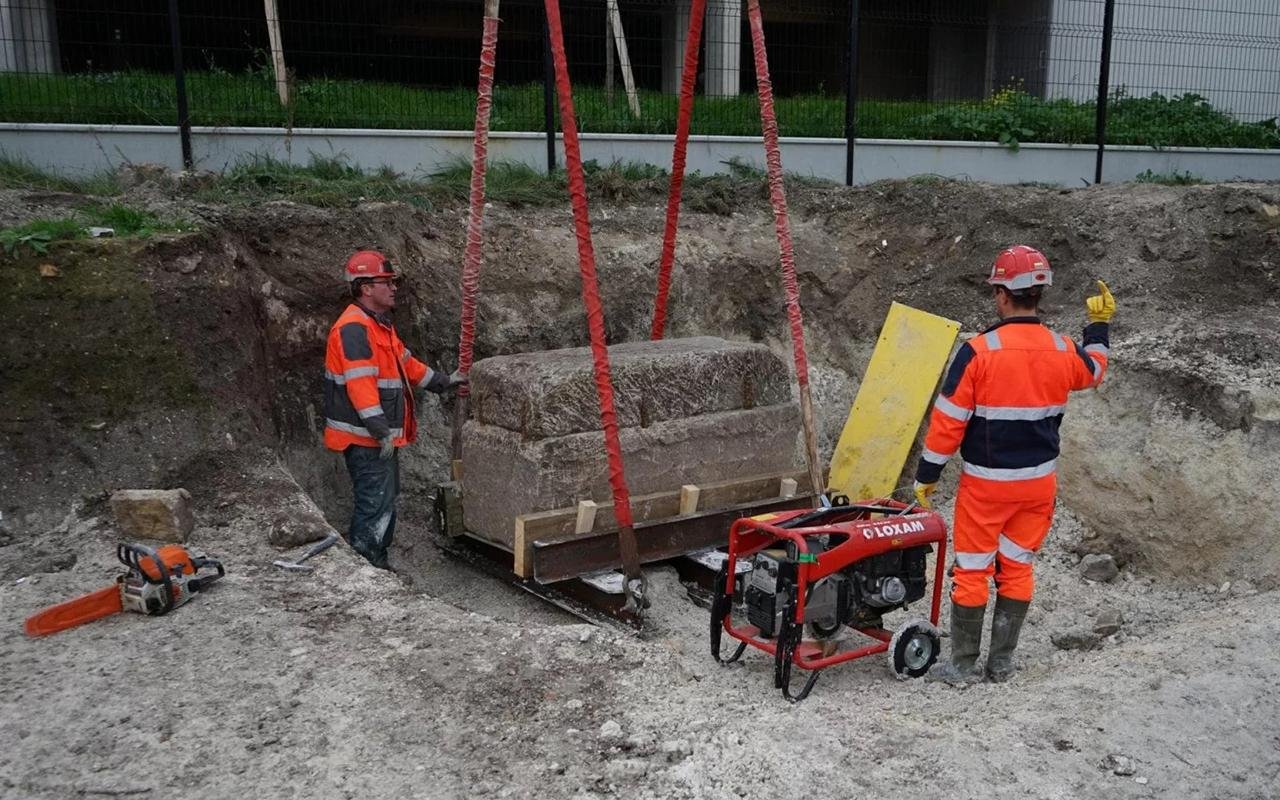Archaeologists in northeastern France have unearthed an unlooted, unopened Roman-era sarcophagus dating back to the second century CE. This remarkable discovery sheds light on the customs and status of an elite woman of her time.
 The limestone sarcophagus, sealed with eight iron clasps and topped by a massive 1,700-pound stone lid, remained intact for centuries, making it a rare find.
The limestone sarcophagus, sealed with eight iron clasps and topped by a massive 1,700-pound stone lid, remained intact for centuries, making it a rare find.
The sarcophagus measures 3.3 feet in height, 5.4 feet in length, and 2.6 feet in width, with a massive stone lid weighing 1,700 pounds. It was firmly sealed with eight iron clasps, secured with lead.
Archaeologists used modern technology to unveil its contents, first employing X-rays to peer inside, followed by an endoscopic camera, revealing a well-preserved human skeleton alongside grave goods intended to accompany the deceased into the afterlife. These items included a small mirror, an amber ring, a comb, four oil lamps, and two glass vials possibly containing scented oils.

The unique aspect of this discovery is that it’s the first unlooted tomb of its kind found in a former Gallo-Roman town.
Agnès Balmelle, the assistant scientific and technical director at the French National Institute of Preventive Archaeological Research (INRAP), expressed the exceptional nature of this discovery, stating, “It’s quite exceptional, it’s the first time we’ve found a tomb that is intact and has not been looted.” This untouched tomb belonged to a woman around 40 years old who held a special status in society.
The sarcophagus was discovered during excavations in the ancient necropolis of Reims, formerly known as Durocortorum during the Roman era. Reims was a prominent city in the Roman Empire and the capital of Belgic Gaul. The necropolis, which covered over 13,000 square feet, extended beyond the city’s walls and was connected to several main roads leading to other Roman Gallic metropolises.

Most ancient burials in the area had been looted over the centuries, and many grave goods were lost during World War I when the museum housing them was bombed. In this area, archaeologists have also found 20 buried and cremated human remains, adding to the growing collection of samples from Reims’ necropolises.

By comparing DNA from the woman’s skeleton to samples from the region, scientists hope to determine whether she belonged to the local elite or had roots elsewhere. The untouched state of the sarcophagus and its contents offers a rare opportunity for archaeologists and historians to deepen their understanding of ancient Roman society and burial customs.